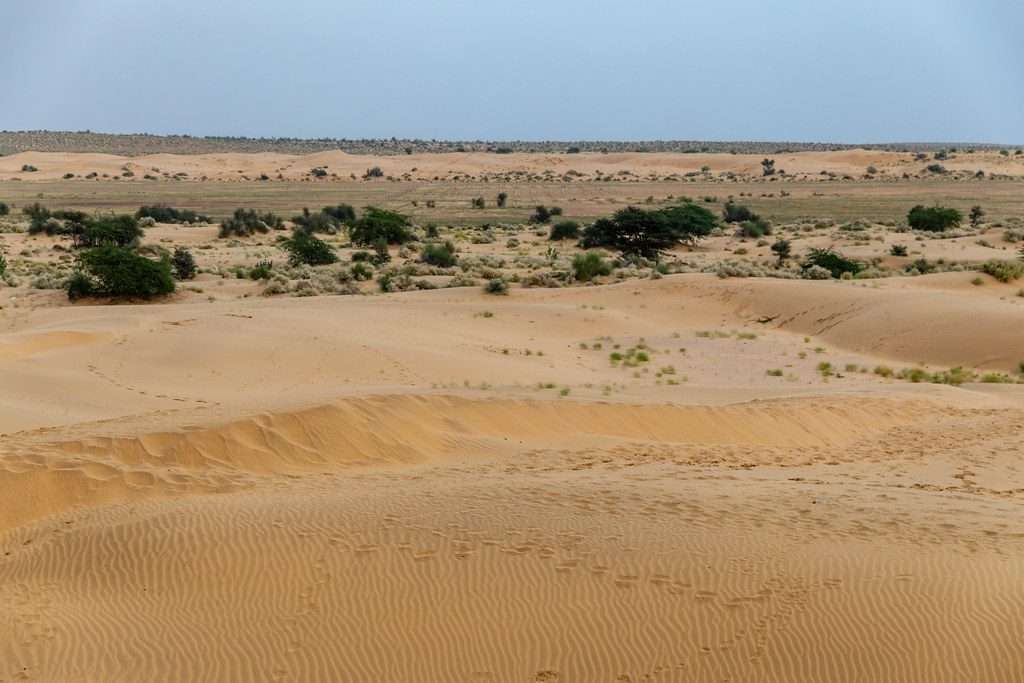New Delhi, May 13, 2024 – India’s iconic Thar Desert, traditionally known for its harsh, arid landscapes, is undergoing an unprecedented transformation, turning greener due to altering climate patterns. While this may seem like a positive development at first glance, environmental scientists are raising alarms over the potential ecological disruptions this greening could cause.
Table of Contents
Climate Induced Changes: A Path to Vegetation
The Thar Desert, sprawling across northwestern India and into Pakistan, has historically been one of the most inhospitable regions on Earth due to its extreme temperatures and sparse rainfall. However, recent studies indicate a significant increase in rainfall and altered weather patterns across the region. Scientists attribute these changes primarily to global climate change, which is shifting the monsoon patterns and possibly leading to the expansion of the Indian Ocean Warm Pool (IOWP), causing increased rainfall in areas like Thar 2 5 9 .

The Risk of Greening in Thar
- Disruption of Native Ecosystems: The desert’s native species, such as the critically endangered great Indian bustard and the Indian desert jird, have adapted to the arid conditions. The increase in vegetation could threaten their survival by altering their habitat and the ecological balance 6 9 .
- Invasive Species and Soil Degradation: Increased vegetation often leads to the growth of invasive plant species that compete with native flora. Additionally, the altered soil conditions could lead to degradation, affecting the desert’s natural regeneration processes 6 9 .
- Water Resource Management Challenges: While increased rainfall could theoretically benefit the arid region, managing this water effectively is crucial. Inefficient management could lead to waterlogging and salinization of the soil, further degrading the land’s quality 5 6 .
- Social and Economic Impacts: The greening of Thar affects the local communities, especially pastoral nomads and agro-pastoralists, whose livelihoods depend on the traditional desert ecosystem. Changes in grazing lands and water resources can disrupt their economic stability 5 8 .
Not Just Local, But Global Concerns


The phenomenon observed in the Thar Desert is not isolated. Deserts across the world are experiencing similar transformations due to climate change, indicating a broader environmental shift that could have far-reaching impacts. The alteration in the Thar Desert serves as a crucial point for research and discussion on how to handle such transformations sustainably 3 7 10 .
Environmentalists emphasize the need for comprehensive studies to fully understand the implications of this greening. Actions such as the restoration of native vegetation and the implementation of sustainable water management practices are being discussed. It is critical that any intervention considers the delicate balance of this unique ecosystem and the communities that depend on it 6 9 .


1 Comment
Nice Work..